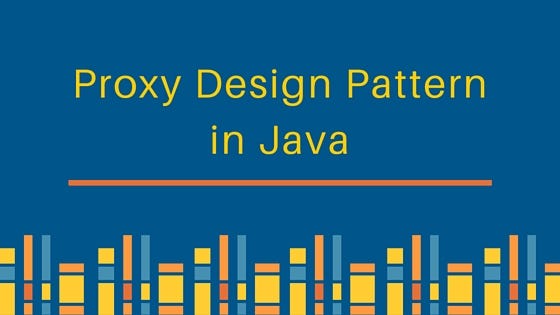
Visitor Design Pattern is a software design pattern used to add additional behavior to objects in an object structure. This pattern allows adding new functionality without changing the object structure. This pattern is particularly useful for applications with data structures and complex object structures.
The object structure is a tree-like structure that expresses relationships between multiple objects. These objects can have different functionalities and may be related to each other. An example is the tree-like structure of employees in a workplace. Each employee is an object with a name, a salary, and a position. These objects may also have relationships with each other. For example, an employee may have a subordinate or a manager.
Visitor Design Pattern can be used to add additional functionalities to every object in the object structure. These functionalities are implemented by a “Visitor” object that works on the objects. The Visitor object visits all objects in the object structure and calls a specific function for each object. This function depends on the type of the visited object and provides additional functionality.
Visitor Design Pattern has two important components: “Element” and “Visitor”. Element provides an interface for every object in the object structure. This interface includes a method that can be visited by a Visitor object. The Visitor, using the methods provided by the Element interface, visits objects and calls a specific function.
This pattern is useful in cases where many different functionalities are required in an object structure. For example, in the tree-like structure of employees in a workplace, each employee may require a different salary calculation function. In such a case, instead of writing a salary calculation function for each employee, Visitor Design Pattern can be used to apply the same visiting function to each employee object and calculate different salaries for each employee.
Visitor Design Pattern, without changing the object structure, makes the application less fragile. Instead of changing the object structure to add new functionality, a new Visitor object can be written. This makes it easier to maintain and develop the code.
Some advantages of Visitor Design Pattern are:
- Adding new functionalities is easy: This pattern makes it easy to add new functionalities to every object in the object structure. To add a new function, only a new Visitor object needs to be written.
- No need to change the object structure: Visitor Design Pattern makes the application less fragile by not changing the object structure. This makes it easier to maintain and develop the code.
- Can be used for multiple functionalities: This pattern makes it easy to add multiple functionalities to every object in the object structure. A new Visitor object can be written for each function.
- Hides details: Visitor Design Pattern simplifies access to the functionalities of every object in the object structure and hides details.
- Reduces dependency: This pattern reduces the dependency of Element objects on Visitor objects. This makes it easier to test and maintain the code.
Some disadvantages of Visitor Design Pattern are:
- Has a complex structure: This pattern provides a separate Element interface and a Visitor interface for every object in the object structure. This can increase the complexity of the application.
- Limited extensibility: Visitor Design Pattern may limit the extensibility of the application. A new Visitor object may need to be written for every new function.
- Performance issues: Visitor Design Pattern may cause performance issues because the Visitor object needs to visit every object in the object structure.
Here’s an example of how to generate SQL scripts from Java objects using Visitor Design Pattern, with support for table, columns, where, join, having, and order by keywords:
First, we define an interface called SQLExpressionVisitor, which defines methods for visiting different types of SQL expressions:
public interface SQLExpressionVisitor {
void visit(SelectExpression select);
void visit(TableExpression table);
void visit(ColumnExpression column);
void visit(WhereExpression where);
void visit(JoinExpression join);
void visit(HavingExpression having);
void visit(OrderByExpression orderBy);
}Next, we define classes for different types of SQL expressions. Each class implements the accept method that takes a SQLExpressionVisitor object and calls the appropriate visit method:
public class SelectExpression {
private List<ColumnExpression> columns;
private TableExpression from;
private WhereExpression where;
private List<JoinExpression> joins;
private HavingExpression having;
private OrderByExpression orderBy;
public void accept(SQLExpressionVisitor visitor) {
visitor.visit(this);
from.accept(visitor);
for (ColumnExpression column : columns) {
column.accept(visitor);
}
if (where != null) {
where.accept(visitor);
}
for (JoinExpression join : joins) {
join.accept(visitor);
}
if (having != null) {
having.accept(visitor);
}
if (orderBy != null) {
orderBy.accept(visitor);
}
}
// constructor and getter/setter methods omitted for brevity
}
public class TableExpression {
private String tableName;
public void accept(SQLExpressionVisitor visitor) {
visitor.visit(this);
}
// constructor and getter/setter methods omitted for brevity
}
public class ColumnExpression {
private String columnName;
public void accept(SQLExpressionVisitor visitor) {
visitor.visit(this);
}
// constructor and getter/setter methods omitted for brevity
}
public class WhereExpression {
private String condition;
public void accept(SQLExpressionVisitor visitor) {
visitor.visit(this);
}
// constructor and getter/setter methods omitted for brevity
}
public class JoinExpression {
private String tableName;
private String condition;
public void accept(SQLExpressionVisitor visitor) {
visitor.visit(this);
}
// constructor and getter/setter methods omitted for brevity
}
public class HavingExpression {
private String condition;
public void accept(SQLExpressionVisitor visitor) {
visitor.visit(this);
}
// constructor and getter/setter methods omitted for brevity
}
public class OrderByExpression {
private List<String> columns;
public void accept(SQLExpressionVisitor visitor) {
visitor.visit(this);
}
// constructor and getter/setter methods omitted for brevity
}Finally, we define a class called SQLQueryBuilder that implements the SQLExpressionVisitor interface. This class can be used to generate SQL scripts from the Java objects:
public class SQLQueryBuilder implements SQLExpressionVisitor {
private StringBuilder sqlBuilder = new StringBuilder();
public void visit(SelectExpression select) {
sqlBuilder.append("SELECT ");
}
public void visit(TableExpression table) {
sqlBuilder.append(table.getTableName()).append(" ");
}
public void visit(ColumnExpression column) {
sqlBuilder.append(column.getColumnName()).append(", ");
}
public void visit(WhereExpression where) {
sqlBuilder.append("WHERE ").append(where.getCondition()).append(" ");
}
public void visit(JoinExpression join) {
sqlBuilder.append("JOIN ").append(join.getTableName())
.append(" ON ").append(join.getCondition()).append(" ");
}
public void visit(HavingExpression having) {
sqlBuilder.append("HAVING ").append(having.getCondition()).append(" ");
}
public void visit(OrderByExpression orderBy) {
sqlBuilder.append("ORDER BY ");
for (String column : orderBy.getColumns()) {
sqlBuilder.append(column).append(", ");
}
public String getSQL() {
return sqlBuilder.toString().trim();
}
}To use this implementation, we can create a SelectExpression object with a TableExpression, some ColumnExpressions, a WhereExpression, a JoinExpression, a HavingExpression, and an OrderByExpression, and then pass it to an instance of SQLQueryBuilder. Finally, we can call the getSQL method of SQLQueryBuilder to get the generated SQL script:
public static void main(String[] args) {
TableExpression table = new TableExpression("employees");
ColumnExpression column1 = new ColumnExpression("name");
ColumnExpression column2 = new ColumnExpression("salary");
WhereExpression where = new WhereExpression("salary > 50000");
JoinExpression join = new JoinExpression("departments", "employees.department_id = departments.id");
HavingExpression having = new HavingExpression("AVG(salary) > 50000");
OrderByExpression orderBy = new OrderByExpression(Arrays.asList("name", "salary"));
SelectExpression select = new SelectExpression();
select.setFrom(table);
select.setColumns(Arrays.asList(column1, column2));
select.setWhere(where);
select.setJoins(Arrays.asList(join));
select.setHaving(having);
select.setOrderBy(orderBy);
SQLQueryBuilder builder = new SQLQueryBuilder();
select.accept(builder);
System.out.println(builder.getSQL());
}This will output the following SQL script:
SELECT name, salary FROM employees JOIN departments ON employees.department_id = departments.id
WHERE salary > 50000 HAVING AVG(salary) > 50000 ORDER BY name, salaryIn conclusion, Visitor Design Pattern is a software design pattern used to add additional functionality to objects in an object structure. This pattern makes the application less fragile by not changing the object structure. Visitor Design Pattern is useful in cases where many different functionalities are required in an object structure. However, the implementation of this pattern can increase the complexity of the application and cause performance issues.






